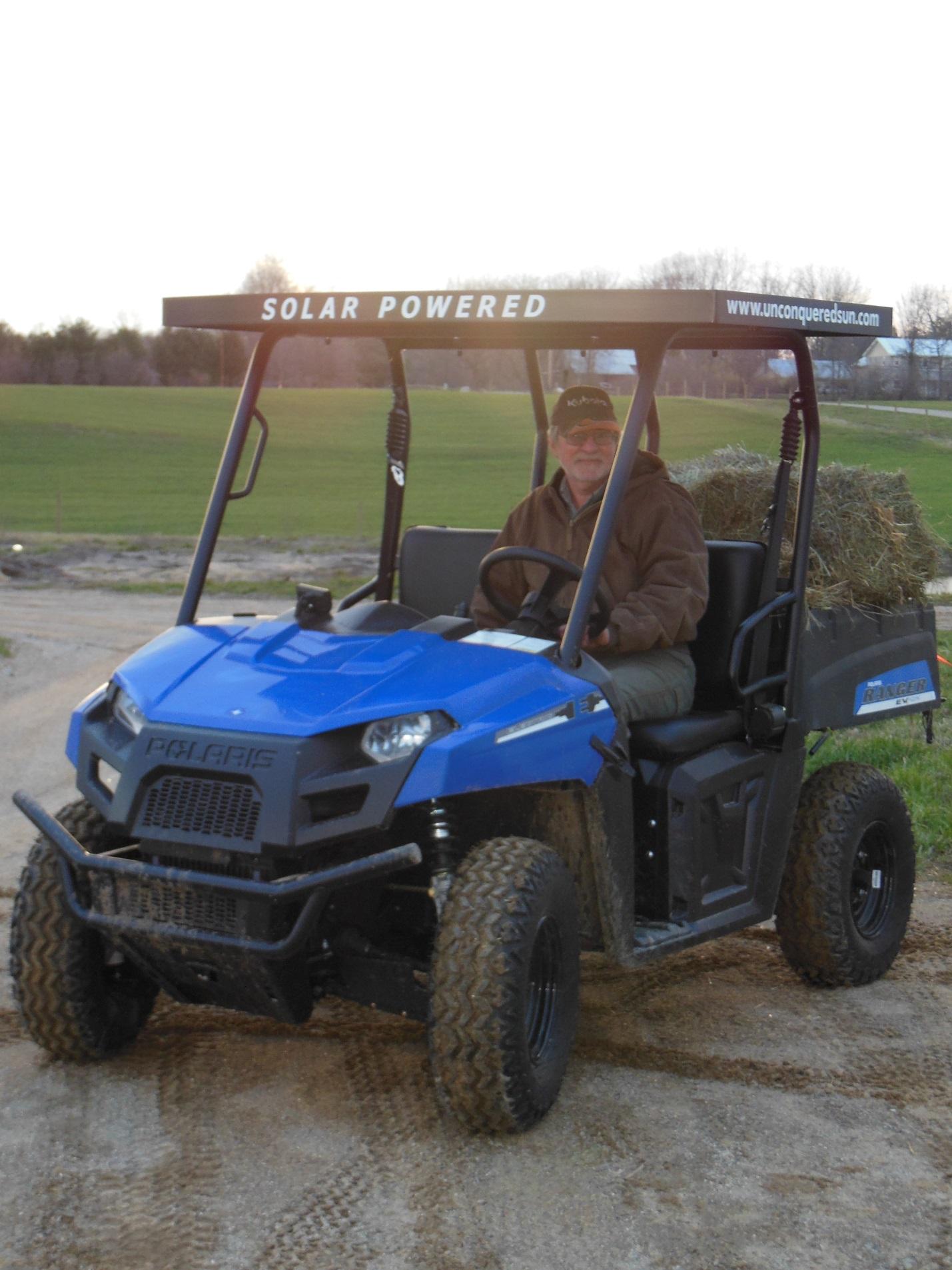

Cultivating Resilient Communities
|
Rita Bober
Norm Bober Ken Dahlberg, Chairperson Maynard Kaufman Ron Klein Suzanne Klein Michael Kruk |
Jim Laatsch Lisa Phillips, Treasurer Michael Phillips Thom Phillips, Managing Director Jan Ryan, Secretary Jon Towne, Newsletter Editor Dennis Wilcox |
 Tumble Bug to move 6’x6’ round bales. Though is can
be charged off the grid-hooked to the BIG battery than comes in from
the road-it will mostly be charged off the solar roof panel. So, we
figured almost 85% of our chores currently using our diesel Kubota
can be performed by the solar powered UTV---Solar power. Check out
these two links:
Tumble Bug to move 6’x6’ round bales. Though is can
be charged off the grid-hooked to the BIG battery than comes in from
the road-it will mostly be charged off the solar roof panel. So, we
figured almost 85% of our chores currently using our diesel Kubota
can be performed by the solar powered UTV---Solar power. Check out
these two links:
 th problems to solve and new
skills to be mastered. In addition, I’m lucky that I have a spouse
that sees value in having a pantry full of canned tomatoes, freezers
full of home-raised meat &veggies, shelves stocked with mead &
wine, and wool socks and sweaters to keep warm in winter. We both
appreciate that security comes in many forms, not just money.”
Rachel is grateful to the women who have gone before, who fought hard
to gain equal rights for all women. She is “truly grateful to have
the choice of staying home or having a career” (she previously had
a job as a CAD drafter for a civil engineer). If the circumstances
were different, she knows “David would gladly be the one to be on
the farm full-time.”
th problems to solve and new
skills to be mastered. In addition, I’m lucky that I have a spouse
that sees value in having a pantry full of canned tomatoes, freezers
full of home-raised meat &veggies, shelves stocked with mead &
wine, and wool socks and sweaters to keep warm in winter. We both
appreciate that security comes in many forms, not just money.”
Rachel is grateful to the women who have gone before, who fought hard
to gain equal rights for all women. She is “truly grateful to have
the choice of staying home or having a career” (she previously had
a job as a CAD drafter for a civil engineer). If the circumstances
were different, she knows “David would gladly be the one to be on
the farm full-time.”
